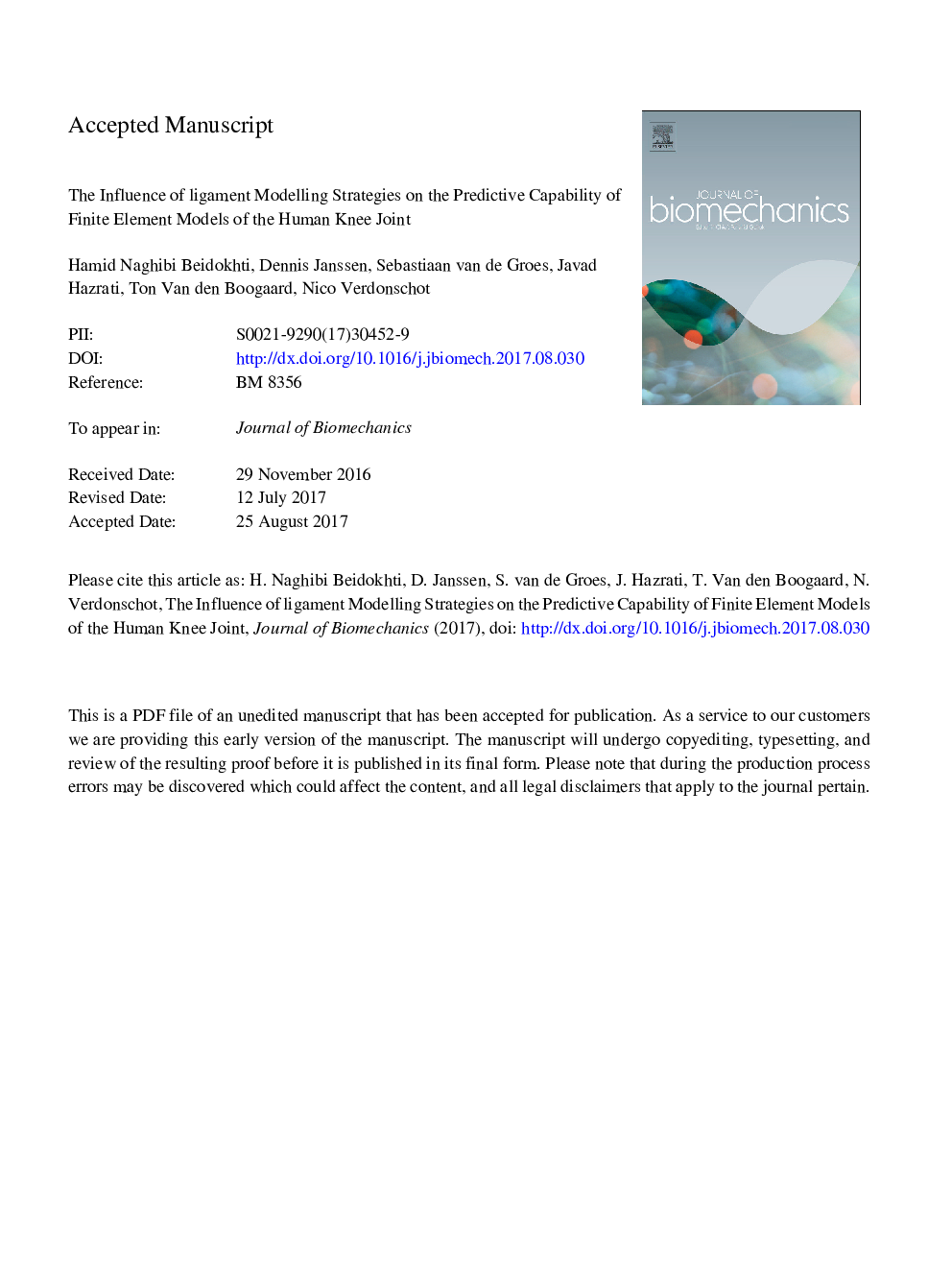| کد مقاله | کد نشریه | سال انتشار | مقاله انگلیسی | نسخه تمام متن |
|---|---|---|---|---|
| 7236961 | 1471099 | 2017 | 26 صفحه PDF | دانلود رایگان |
عنوان انگلیسی مقاله ISI
The influence of ligament modelling strategies on the predictive capability of finite element models of the human knee joint
ترجمه فارسی عنوان
تاثیر استراتژیهای مدل سازی لیگامان در قابلیت پیش بینی مدل عناصر محدود مفصل زانو انسان
دانلود مقاله + سفارش ترجمه
دانلود مقاله ISI انگلیسی
رایگان برای ایرانیان
کلمات کلیدی
ترجمه چکیده
مدل (هر دو بهار و پیوسته) با خواص خاص موضوع بهبود سینماتیک پیش بینی و پارامترهای نتیجه تماس. مدل هایی که پارامترهای مبتنی بر ادبیات، و به ویژه مدل های بهار (با بازنمودهای اجرا شده در این مطالعه)، خطاهای نسبتا زیاد در سینماتیک و فشارهای تماس را به همراه داشت. با استفاده از رویکرد مدل سازی پیوسته، متغیرهای نتیجه تماس دقیق تر نسبت به نمایندگی بهار با دو (رباط های مصنوعی) و سه (رباط های ثانویه) نمایه تک تک سلولی ارائه شد. با این حال، زمانی که پیش بینی سینماتیک مشترک از منافع اصلی است، مدل های لیگامان بهار یک گزینه سریع تر با نتایج قابل قبول ارائه می دهند.
موضوعات مرتبط
مهندسی و علوم پایه
سایر رشته های مهندسی
مهندسی پزشکی
چکیده انگلیسی
Models (both spring and continuum) with subject-specific properties improved the predicted kinematics and contact outcome parameters. Models incorporating literature-based parameters, and particularly the spring models (with the representations implemented in this study), led to relatively high errors in kinematics and contact pressures. Using a continuum modelling approach resulted in more accurate contact outcome variables than the spring representation with two (cruciate ligaments) and three (collateral ligaments) single-element-bundle representations. However, when the prediction of joint kinematics is of main interest, spring ligament models provide a faster option with acceptable outcome.
ناشر
Database: Elsevier - ScienceDirect (ساینس دایرکت)
Journal: Journal of Biomechanics - Volume 65, 8 December 2017, Pages 1-11
Journal: Journal of Biomechanics - Volume 65, 8 December 2017, Pages 1-11
نویسندگان
Hamid Naghibi Beidokhti, Dennis Janssen, Sebastiaan van de Groes, Javad Hazrati, Ton Van den Boogaard, Nico Verdonschot,
